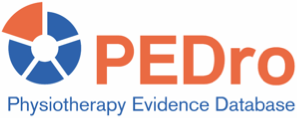Breast cancer is the leading cause of cancer morbidity and mortality in women globally. Self-directed physical activity or exercise programs are associated with positive breast cancer outcomes. Behavioural strategies that can increase adherence with these programs include self-monitoring by using a step tracking device and motivational interviewing. This systematic review aimed to estimate the effect of different behavioural strategies to improve adherence to self-directed physical activity or exercise programs in women who had non-metastatic breast cancer.
Guided by a prospectively registered protocol, sensitive searches were performed in six databases (including PubMed and Cochrane CENTRAL) to identify randomised controlled trials evaluating self-directed physical activity or exercise programs in women with non-metastatic breast cancer. Participants must have completed surgery, chemotherapy, and radiotherapy treatments for stage 0 to III breast cancer at least 3 months prior to recruitment. The intervention was any form of self-directed physical activity or exercise program (ie, at least half the program was implemented without supervision from a health professional). Behavioural strategies used in the programs were classified as step tracking and counselling, step tracking and motivational interviewing, and step tracking and printed material. The comparator was usual care. The primary outcome was adherence at the end of follow-up measured as a dichotomous (percentage achieving an exercise volume recommendation – full or partial adherence with the program or a physical activity recommendation) or continuous (measures of exercise duration, intensity, or step count) variable. Two reviewers independently selected trials for inclusion, with any disagreements resolved by a third reviewer. Data were extracted by one reviewer and verified by up to two other reviewers. Two reviewers evaluated risk of bias using the Cochrane risk of bias tool, with any disagreements resolved by discussion. Certainty of evidence was not evaluated. Meta-analysis was used to pool the included trials, using odds ratios and 95% confidence intervals (CI) for dichotomous variables, and standardised mean difference and 95% CIs for continuous variables. Trials in the meta-analysis were grouped according to the behavioural strategies used: step tracking and counselling, step tracking and motivational interviewing, and step tracking and printed material.
Ten trials (1,334 participants) with a follow-up of between 12 weeks and 6 months were included in the meta-analyses. The mean age of women in the trials was 50-62 years. Four trials used step tracking and counselling, two used step tracking and motivational interviewing, and four used step tracking and printed material, in conjunction with a self-directed physical activity or exercise program. Comparator groups received usual care, waitlist control or step tracking.
More participants achieved a physical activity recommendation in groups receiving behavioural strategies in combination with self-directed exercise (218/474, 46%) than in control conditions (152/477, 32%), with an odds ratio 2.66 (95% CI 1.34 to 5.27; 6 trials; 951 participants). This effect was slightly larger for step tracking and counselling (odds ratio 7.10; 95% CI 1.13 to 44.75; 3 trials; 373 participants) and step tracking and motivational interviewing (odds ratio 5.95; 95% CI 2.29 to 15.44; 1 trial; 87 participants) than for step tracking and printed material (odds ratio 1.24; 95% CI 0.72 to 2.13; 2 trials; 491 participants). The outcomes of full or partial adherence with the program were not reported.
Participants in groups receiving behavioural strategies in combination with self-directed exercise achieved 0.55 standard deviations more moderate to vigorous physical activity than those in control conditions (95% CI 0.30 to 0.79; 9 trials; 1,262 participants). This effect was consistent across the step tracking and counselling (standardised mean difference 0.70; 95% CI 0.14 to 1.25; 4 trials; 435 participants), step tracking and motivational interviewing (standardised mean difference 0.70; 95% CI 0.39 to 1.01; 2 trials; 167 participants), and step tracking and printed material (standardised mean difference 0.32; 95% CI 0.07 to 0.57; 3 trials; 660 participants) subgroups.
When combined with a self-directed physical activity or exercise program, the behavioural strategies of step tracking with counselling, motivational interviewing or printed material appear to increase adherence with physical activity in women who had non-metastatic breast cancer.
Pudkasam S, et al. Motivational strategies to improve adherence to physical activity in breast cancer survivors: a systematic review and meta-analysis. Maturitas 2021;152:32-47



